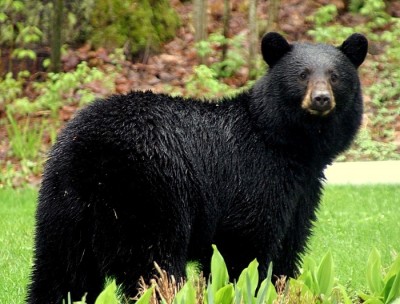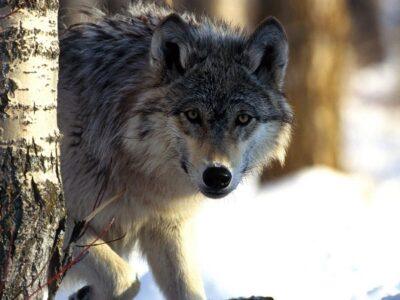Learning to coexist with wildlife is easier than constantly trying to work against Mother Nature. Even the peskiest animals out there do serve a purpose in the environment and should be treated with respect.
Unfortunately, living with wildlife isn’t always easy and can be dangerous if you aren’t safe. That all goes with the territory of living in a rural area – on a homestead or elsewhere. For most people, dealing with the odd wildlife encounter in the country is favorable over a situation with potentially dangerous people in a city.
Know Your Local Species
The very first step to living peacefully with wildlife is to buy a wildlife guide for your area and study it. Being able to quickly identify species keeps you safe, keeps animals safe and can be very helpful if you need to ID a species to authorities like the Department of Fish & Wildlife.
Legally, it is wise to know what animals are around your area due to laws on protected species. Protected species will vary state-to-state so you will need to check out your state’s DFW website. You can find a complete listing of Fish and Wildlife’s endangered animals by clicking here.
Tips for Living Peacefully with Wildlife
The trick to coexisting with wildlife is a combination of common sense and prevention.
Following are a few tips on living in an area with wildlife.
- Invest in sturdy fencing around areas you don’t wish wildlife to enter, like yards, gardens or orchards. The type of fencing you will need depends on the wildlife in your area. If you live in an area with deer, you will need at least a 6-foot-high fence. Maybe feral pigs or bear are an issue. If that is the case, you will need a sturdy fence and maybe even a strand or two of electric.
- Keep all trash in bear-proof garbage cans or in a closed-off area. For areas without bears, then coyotes, raccoons, feral dogs and other animals will still get into trash. Not only does this make a mess but it also teaches wildlife that your home is a source of food.
- If you have pets or livestock, keep them contained. Pets, like cats or dogs, not only pose a threat to wildlife but also can be seen as prey themselves. Livestock pose as an easy meal for predators, particularly fowl, sheep, goats and young calves. Think of fencing not as a means to keep your animals in but to keep predators out.
- Do not try to make pets out of wildlife. It can be tempting to get close to wildlife and feed them. The problem with this is that it can be dangerous to all wildlife to become used to humans. Wildlife that are comfortable with people may act aggressively.
- If you find an injured animal, contact a local wildlife rehab center (more information can be found here). Trying to help an injured animal not only puts you in harm’s way but also may harm the animal in the long run because of lack of training on your part. Another thing to consider is that in some states it is technically illegal to harass (this includes handling) or keep native species captive.
Dealing with Potentially Dangerous Wildlife
Encounters with certain wildlife can be not only dangerous but deadly. Aside from obvious wildlife like cougars, bears or wolves, even animals you’d consider to be gentle herbivores can be dangerous. Moose, elk and even deer can easily harm a person, especially if it’s during rut when males are looking for a fight. Moose, both cows and bulls, are very bold animals and will defend themselves if they feel threatened.
Depending on the species, there are certain ways you should react if you come face to face with them. Standing your ground and shouting may work well with a curious bobcat or small coyote, but with a bear or moose it may only escalate the situation.
Here are a few links to dealing with encounters based on common species. Contacting your local F&W department (find yours here) is a great way of learning what to do as well as discover what encounters happen most often in your neck of the woods.
What to Do About Troublesome Wildlife
If you’re having repeated issues with wildlife despite taking preventative measures, you have a few options. Pests like gophers, ground squirrels or rabbits may be dispatched of. Bigger small game like raccoons or possums can be trapped and released elsewhere. For game animals like deer you often can’t do much about but it would be worth calling your local F&W for more information. Predatory animals like coyotes may be dispatched of if they were acting aggressively towards humans or were caught in the act of harming pets or livestock.
Again, it is important to check with your local department as you can be heavily fined for harming a protected species — in some cases even if they have killed livestock. Living with wildlife is an adventure and often very enjoyable. Though an encounter with a cougar or wolf would be frightening, please remember that the chance of it happening is rare. Most wildlife, even the “scary” ones, want to be left alone just as much as you want to be left alone.
What “troublesome” wildlife are most prevalent where you live, and what do you do to keep them away? Share your tips in the section below.
 Off The Grid News Better Ideas For Off The Grid Living
Off The Grid News Better Ideas For Off The Grid Living






